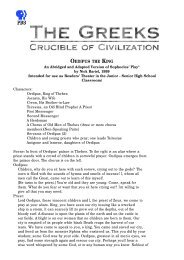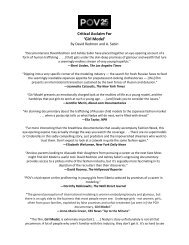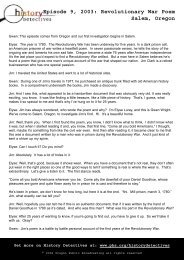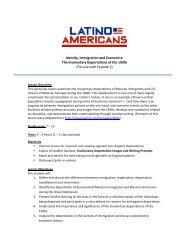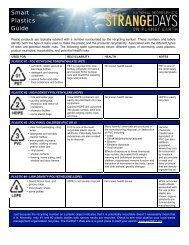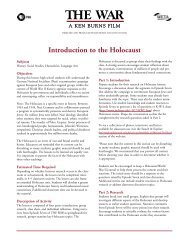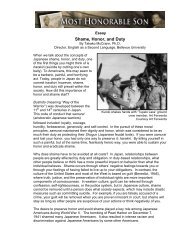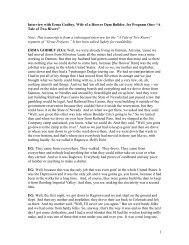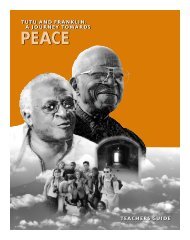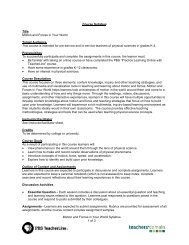DG - The Last Conquistador - PBS
DG - The Last Conquistador - PBS
DG - The Last Conquistador - PBS
Create successful ePaper yourself
Turn your PDF publications into a flip-book with our unique Google optimized e-Paper software.
Discussion Guide | <strong>The</strong> <strong>Last</strong> <strong>Conquistador</strong>Discussion PromptsSeason21themselves from the statue? How about the children of thestatue’s advocates? How might children who have bothAmerican Indian and Spanish ancestry make sense of thestatue?• Houser says that Oñate “represented a morality of adifferent period.” Whose moral code is Houser referencing?That of the Spanish? <strong>The</strong> Indians’? Was that code universal atthe time? Do you think historical context is a satisfying justificationfor going ahead with the statue? Why or why not?• Maurus Chino says, “If Nazis were the only ones thatrecorded their history, I am sure we would have a different viewof history now.” In other words, history written by the victorlooks different from history as recalled by the conquered. Whowrote the history that you have been taught or that is taught inyour school district? What perspectives does it celebrate andwhat does it leave out? What does this tell us about ourselvesas a nation?• David Romo says, “You’re really commemorating that onegroup of white people took away the homeland of another groupof brown people. Is that really the great vision, the great valuethat America is founded on? Conquest? Maybe a lot of people doagree. Maybe this nation is founded on conquest. MaybeAmerica is founded on genocide.” In your view, what are the“great values” on which the United States was founded, and inwhat ways does the conquistador symbolize or misrepresentthose values?<strong>The</strong> statue of Juan de Oñate being sculpted.Photo courtesy of <strong>The</strong> XII Travelers CommitteeConflict Resolution• David Romo says, “We always see ourselves as bearers ofgood fruit, but that fruit is poison to other people.” How canpeople celebrate the positive side of their legacy while alsoowning the negative side? Is there a way in which El Paso couldhave honored a founding father or their Spanish roots withoutdishonoring those who suffered?• <strong>The</strong> conflict in El Paso is not simply a dispute over asculpture. How would each side explain what the statuerepresents? How would you describe the underlying issues inthe dispute?• Maurus Chino says, “<strong>The</strong>re is this chasm between twocultures, which I believe will never be fully understood byeither.” How have both groups interpreted each other’s heritageand history? What do you think each side said that the other didnot hear? If you had the opportunity, how would you help thetwo cultures more fully understand each other?• When reminded of opposition to the statue, a guest at a XIITravelers Project fund-raiser says that Oñate wasn’t “politicallycorrect.” Is the opposition to the monument about “politicalcorrectness”? In your experience, how is this phrase used andby whom? What role does it play in resolving differences ofopinion?© American Documentary, Inc.17





